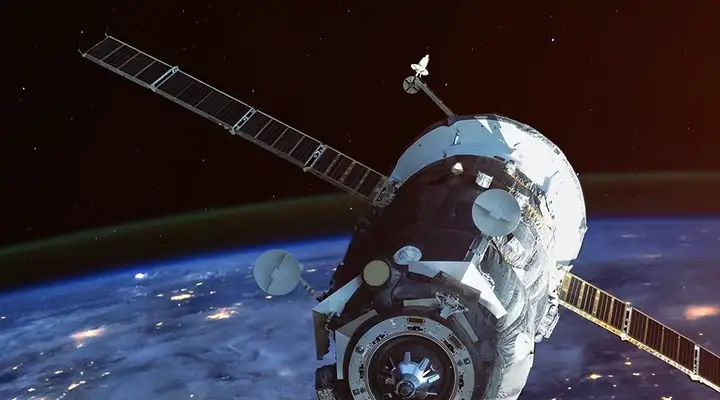
Photovoltaic cells in space
Generating power for missions under the harshest conditions
Space is one of the most demanding environments that humans have explored. Its extreme temperatures and high levels of electromagnetic and particle radiation make it a fundamental challenge for any spacecraft. This challenge is compounded for photovoltaic cells, which have to generate power for the entirety of the mission. These cells need strong cover glass to protect them and their components, as well as to increase efficiency by providing high light transmission.
Providing protection in space
On October 4, 1957, a great chapter in the age of space travel began with the launch of the Soviet satellite Sputnik 1. However, the first artificial Earth satellite's mission was a short one. At that time, batteries were used to power the satellite. These lasted for only 21 days, and after 92 days in orbit, Sputnik 1 burned up in the atmosphere.
At that point, the race for technical superiority in space began. Shortly thereafter, satellites were equipped with solar cells in addition to batteries. The goal of the built-in solar cell was to supply satellites with electricity for the duration of their missions with power obtained from solar radiation in orbit. This addition significantly reduced battery mass and substantially extended mission duration. Of the approximately 4,900 active satellites orbiting the Earth by the end of 2021, nearly every satellite relies on solar cells to provide a reliable power supply.
Another challenge for satellites in space is wear and tear. Space is a hostile environment, with extreme low and high temperatures and enormous temperature changes. Additionally, missions face pressures from the vacuum atmosphere, and high doses of electromagnetic and charged particle radiation from the Sun and other stars outside our solar system. These are extremely stressful for materials.
In order to withstand the challenging environmental conditions of space, materials require suitable protection. In order to function, the solar cells that equip satellites rely on the long-term protection provided by covering solar cells with glass.

Glass – the ideal material for space photovoltaics
Solar cells consist of a semiconductor such as germanium or silicon into which other elements, such as arsenic, boron, gallium, or phosphorus, are introduced in small quantities layer by layer. This contamination of the semiconductor is called doping and, simply explained, creates superimposed layers with an electron surplus or deficit. Irradiation with electromagnetic radiation, especially in the visible light or near-infrared spectrum, stimulates electron transfer between the layers and thus current flows. As long as the solar cell is irradiated, this process will continue.As an almost tireless source of radiation, the Sun is not only the center of our solar system but also, with the help of solar cells, the central component of electricity generation. However, the Sun, as well as other stars outside our solar system, emit radiation types which are both helpful and harmful. In particular, high-energy radiation of charged particles and short-wave UV radiation cause great damage in the solar cell and destroy the doped layers of the semiconductor. Without sufficient protection, a solar cell will quickly lose its function.
In order to reduce or even avoid this damage, solar cell cover glass offers two key properties: it ensures high transmission and provides protection from radiation. This cover glass acts like a filter and is highly transparent for the useful radiation in the visible and near infrared spectrum while reducing the intensity of harmful radiation or even absorbing it completely without being damaged itself. These are the transmission and protective properties provided by SCHOTT´s Solar Cell Cover Glasses.
Advantages of glass in space
In space, satellites are under constant attack from a range of different types of radiation. Electromagnetic radiation in the form of UV and high-energy particle radiation can lead to material degradation due to solarization and electrostatic charging. By blocking this radiation, SCHOTT® Solar Glass protects the cell and its sensitive components.
Protects against harmful UV and particle radiation
Increases efficiency of the solar cell
Thanks to high light transmission, SCHOTT® Solar Glass enables more light to reach the solar cell to generate more power for the spacecraft. With over 90 % transmittance in the UV-A to NIR range, SCHOTT® Solar Glass is ideally matched to the Sun’s spectrum, and the amount of light reaching the solar cell is maximized, with little loss of energy.
Ultra-thin and cost-effective
Space exploration is an expensive business, and anything that can reduce fuel costs will be welcomed by the satellite operator. Available in thicknesses as low as 30 micrometer, SCHOTT® Solar Glass sphere offers high strength and protection at a lower weight.
Used materials
Discover our range of SCHOTT´s Solar Cell Cover Glasses and choose which one answers your challenge.



